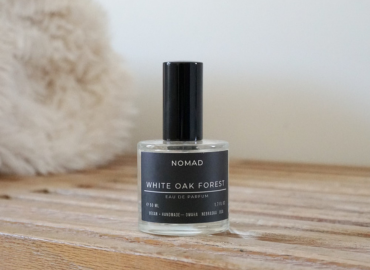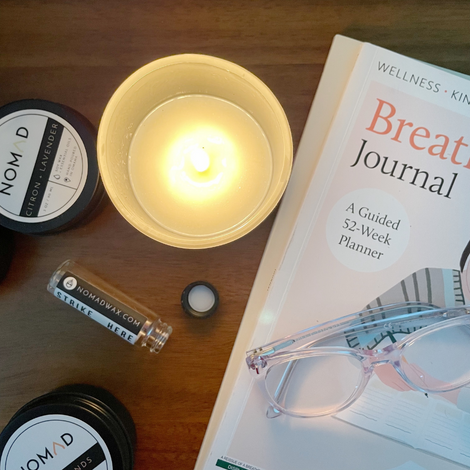Guide to the basics of fragrance concentration (2025)

The world of perfumes can by confusing. With so many different perfume types - and named in french, no less - you may not know the difference between an Eau de Toilette and and an Eau Fraiche. Not to worry, we're here to share a down-and-dirty summary of the different fragrance concentrations and what each means.

As the percent of fragrance increases, so does the intensity and longevity of the product, and also the price. This is due to the greater amount of fragrance oils actually in the product - and the fragrance ingredients are where the cost is. It's important to know that different perfume houses or perfumers typically assign their own percentages for each of their fragrance lines within their brand. So while an eau de parfum has a higher concentration of fragrance than an eau de toilette, the precise percentages will differ (sometimes dramatically) among perfumers or brands. One makers eau de toilette may be stronger than another's eau de parfum. This can present a challenge if you're trying to compare apples to apples in terms of fragrance strength and price - and where perfumery shows off the nebulous artistry that makes it so infuriatingly divine. lolz
For most types of perfume or cologne, alcohol acts as a diffusing agent to deliver the fragrance, along with a trace of water. For example, colognes have about 3–5% perfume oil mixed with 80–90% alcohol with about 5 to 15 percent water in the mix. The precise formulation, again, will vary by brand and perfumer.
You can also find perfume oils or l'huile parfum for the higher concentration perfume formulas, that are strong and best worn close to the skin as opposed to sprayed on clothing, body and hair. They are made of perfume oil blended with a carrier oil and are often rolled or dabbed onto the skin. You will often find l'huile parfum in a roller ball or dropper application. You will also find Parfum Extrait or perfume extracts in oil form, because of their high fragrance potency - a little goes a long, long way. These are usually applied with a dropper.
Now, let's understand exactly how the different fragrance concentrations compare to one another. We'll start with the lowest concentration (the weakest/cheapest scents) and work our way up.
Eau Fraîche / Splash / Aftershave / Body Spray: 1-3% concentration of fragrance. This is the weakest member of the perfume family. Good for light scents and to use in warm, humid weather as the high water base (sometimes combined with alcohol) will diffuse the scent as it evaporates, but the lower concentration of fragrance oil means any change in fragrance on hot, sweaty/oily skin will be minimized. Generally last for up to two hours on the skin.
Eau Parfumeé: 5-8% concentration, but does not contain alcohol as a solvent. Also known as perfume water, eau parfumeé is a lighter, less intense version of perfume. moisturize, refresh and scent your skin even in the summer. Usually alcohol-free or very minimal quantity, good for those with skin sensitivities to alcohol.
Eau de Cologne (EDC): 2-4% concentration and a high amount of alcohol. Often referred to as simply, "cologne," Eau de cologne originally was a traditional recipe that used herb and citrus notes with little anchoring with base notes. It is cheaper than other types of fragrance because of the low fragrance concentration and typically only lasts for up to two hours. EDC generally comes in bigger bottles as more fragrance needs to be used to increase scent performance.
Eau de Toilette (EDT): 5-15% concentration with a primarily alcohol base, EDT is one of the most popular types of fragrance on the market. EDT fragrance normally lasts for 2-3 hours on the skin. Some classicists consider eau de toilette appropriate for daytime wear, and eau de parfum is considered nighttime wear. EDT has the most affordable perfume price point for most fragrance brands.
Eau de Parfum (EDP) / Parfum de Toilette (PDT): 15-20% concentration, EDP is usually the highest concentration perfume product for most major retail market brands. Eau de parfum is suitable for everyday use, or to save as a nightwear fragrance. Typically lasts for 4-5 hours on the skin.
Esprit de Parfum: 15-30% concentration, seldom used in major retail fragrance brands. Made famous by the Dior brand from some of their iconic fragrances in the 1980's. Sits between EDP and a Parfum in strength and price.
Parfum Extrait / Perfume Extract / Perfume Oil: 20-50% concentration of fragrance oil. Also known as Pure Parfum, it is the strongest fragrance concentration with between 20-50% of it being the fragrance oil. An extrait will stay on your skin longer than an EDP, but it probably won't project as much since it doesn't have alcohol to diffuse the fragrance molecules. It will linger on your skin, warming with your body throughout the day or night, typically lasting for hours.
| FRAGRANCE TYPE | COST | CONCEN- TRATION |
LASTS | BEST FOR |
| Splash / Aftershave / Body Spray | $ | 1-3% | Up to 2 hrs | Warm weather, light & fresh scent, those with fragrance sensitivities. |
| Eau Parfumeé | $ | 5-8% | Up to 2 hrs | Those with alcohol sensitivities as it does not use alcohol as the solvent |
| Eau de Cologne | $-$$ | 2-4% | Up to 2 hrs | Budget-friendly versions of higher priced scents, trendy or seasonal scents |
| Eau de Toilette | $$ | 5-15% | 2-3 hrs | Budget-friendly or lighter version of Eau de Parfum, trendy or seasonal scents |
| Eau de Parfum / Parfum de Toilette | $$$ | 10-20% | 4-5 hrs | Good sillage with stronger potency, signature personal fragrance or everyday scent |
| Esprit de Parfum | $$$-$$$$ | 15-30% | 4-6 hrs | Signature personal fragrance or classic scents, special occasions |
| Parfum Extrait / Perfume Oil | $$$$ | 20-50% | 6-8 hrs | Intimate fragrance, high potency, signature personal fragrance, special occasions & events (i.e. wedding day) |




